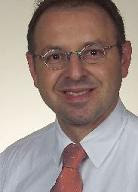He is one of the few truly interdisciplinary people I know. And in contrast to modern interpretations of interdisciplinary (people from different working together) he is himself interdisciplinary in his own education and work. He studied Math, Physics and Philosophy, worked while he studied in a company making (radio) tubes, completed a teacher training, did his PhD in Philosophy but thematically very close to the then emerging field of computer science and became later a post-doc in the computing center. He taught didactic of mathematics in a teacher training University, was a visiting professor at the State University of New York and finally became in 1973 professor for computer science at the University of Stuttgart staring the department of dialog systems. This unique educational path shaped his research and I would expect his whole person. Seeing this career path I have even more trouble accepting the streamlining of our educational system and find it easier to relate to a renaissance educational ideal.
 Yesterday evening we had a small seminar and gathering to mark the 50th anniversary of his PhD. Our colleague Prof. Catrin Misselhorn, a successor on the chair of philosophy held by Max Bense, talked about “Aesthetic as Science?” (with a question mark) and started with the statement that what people did in this area 50 years ago is completely dated, if not largely wrong. I found the analysis very interesting and enlightening as it highlights that scientific results, to be relevant, do not have a non-transient nature. For a mathematician this may be hard to grasp, but for someone in computing and especially in human computer interaction this is a relief. It shows that scientific endeavors have to be relevant in their time but the lasting value may be specifically in the fact, that they go a single step forward. Looking back a human computer interaction a lot of the research in 70ties, 80ties, and 90ties looks now really dated, but we should not be fouled, without this work we would not be in interactive systems where we are now, if this work would not have been done.
Yesterday evening we had a small seminar and gathering to mark the 50th anniversary of his PhD. Our colleague Prof. Catrin Misselhorn, a successor on the chair of philosophy held by Max Bense, talked about “Aesthetic as Science?” (with a question mark) and started with the statement that what people did in this area 50 years ago is completely dated, if not largely wrong. I found the analysis very interesting and enlightening as it highlights that scientific results, to be relevant, do not have a non-transient nature. For a mathematician this may be hard to grasp, but for someone in computing and especially in human computer interaction this is a relief. It shows that scientific endeavors have to be relevant in their time but the lasting value may be specifically in the fact, that they go a single step forward. Looking back a human computer interaction a lot of the research in 70ties, 80ties, and 90ties looks now really dated, but we should not be fouled, without this work we would not be in interactive systems where we are now, if this work would not have been done. 
Prof. Frieder Nake, one of the pioneers of generative art and a friend and colleague of Prof. Gunzenhäuser, reflected on the early work of computers and aesthetics and on computer generated art. He too argued the original approach is 'dead', but the spirit of computer generated art is stronger now than ever, with many new tools available. He described early and heated discussions between philosophers, artists, and people who made computer generated art. One interesting approach to solve the dispute is is that the computer generated art is “artificial art” (künstliche Kunst).
The short take away message from the event is:
If you do research in HCI, do something that is fundamentally new. Question the existing approach and creates new ideas and concepts. Don’t worry if this will last forever, accept that your research will likely be 'only' one step along the way. It has to be relevant when it is done, it matters less that it may have little relevance some 20 or 50 years later.
[1] Rul Gunzenhäuser. Ästhetisches Maß und ästhetische Information. 1962.


2 comments:
kanchipuram sarees
kanchipuram silk sarees
kanchipuram silk sarees wholesalers
kanchipuram sarees
kanchipuram silk sarees
kanchipuram silk sarees wholesalers
Herbal Powder
golu dolls
kanchipuram sarees
kanchipuram silk sarees
kanchipuram silk sarees wholesalers
kanchipuram sarees
kanchipuram silk sarees
kanchipuram silk sarees wholesalers
Herbal Powder
golu dolls
Post a Comment